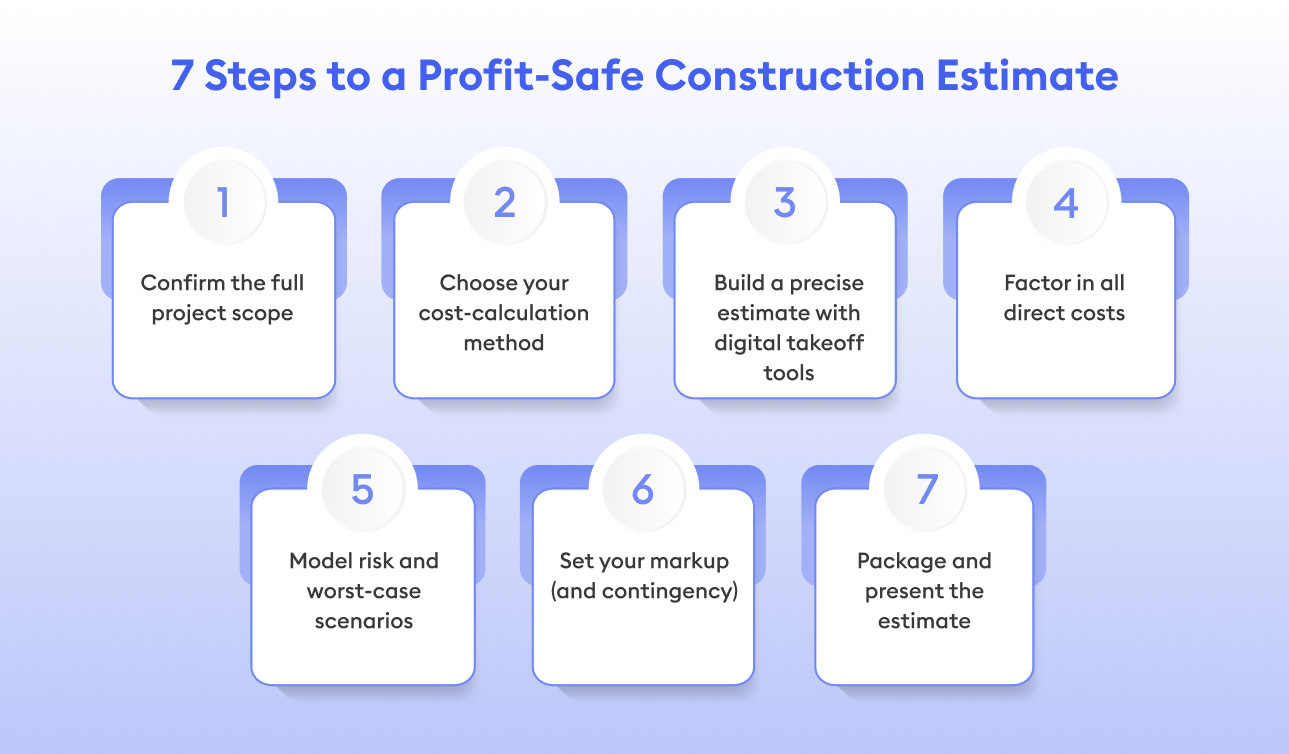A quick story to set the stage
It is 5:12 p.m. on a Tuesday.
Your inbox pings. Addendum 03.The bid is due tomorrow.
You forward plans to the team. Someone starts tracing PDFs. Someone hunts for last month’s steel rate. Someone copies a worksheet from a past job and promises to “clean it up.” It is quiet for a while. Then the questions start. Which file is final. Which alternative is in. Which scope note got missed.
Nothing here is about skill. Your people are sharp. The problem is the system. Outdated estimating methods turn good teams into firefighters. And profit leaks out in tiny drips that no one sees until bid day.
Let’s fix that.
What Do “Outdated Estimating Methods” Even Mean?
Short answer: slow, manual, and siloed.
- Hand-built spreadsheets with fragile formulas
- Quantities measured page by page, then retyped into a cost model
- Static price sheets that ignore weekly market movements
- Email attachments and file names like Final_FINAL_v7.xlsx
These feel familiar. They also create compounding errors, late nights, and missed scope. If your process looks like this, you are working harder than you need to and getting less in return.
The High Cost of Sticking to the Past: Why Old Methods Are Killing Your Bottom Line
Profit Erosion: Every Bid, Every Loss
- A single formula error on a $5M job can wipe out six figures.
- Manual estimating problems show up as rework, rushed vendor quotes, and padded contingencies.
- Capacity stalls when half the week goes to tracing drawings.
Project Delays and Client Dissatisfaction
- Prices move. Designs change. If your numbers lag reality, cost overruns follow.
- Slow updates ripple into RFIs, change orders, and schedule slips.
Reputational Damage and Missed Opportunities
- Owners remember who turns clean, on-time numbers.
- Late or inaccurate bids get you crossed off the next invite list.
Resource Misallocation and Employee Burnout
- Nights go to counting doors and linear footage.
- The work that wins bids gets sidelined: better pricing, value engineering, and risk review.

Unmasking the Causes: Why Your Estimates Are Falling Short
Reliance on Manual Data and Spreadsheets
Copy-paste errors. Hidden links. Silent formula drift. Under pressure, these small mistakes become inaccurate estimates that drain margin.
Ignoring Real-Time Market Fluctuations
Static tables can’t track weekly swings. Without real-time data for project management, your project budgeting feels like guesswork.
Poor Collaboration and Data Silos
Email attachments and local drives create version confusion. People work from different truths. Scope gets missed.
Underestimating Scope, Labor, and Contingencies
Keyed notes, alternates, phasing, and addenda changes slip through when teams rush. A missed note can erase a project’s entire profit.
Quick Checklist: Is Your Estimating Outdated?
- Most quantities still measured manually
- Pricing tables updated less than monthly
- Multiple spreadsheet versions on the same job
- No standard checklist for alternates or addenda
- No side-by-side compare across plan versions
- Late nights to hit bid day
If you checked three or more, your process is leaking money.
At-a-Glance: Manual vs Modern
Modernizing Your Approach: The Path to Accurate, Profitable Estimates
Embracing Estimating Software and AI
You do not fix margin with longer nights. You fix it by removing the bottleneck.
Beam AI automates takeoffs across 15+ trades. Estimators receive quantities, keyed scope notes, and clean Excel exports that fit the way they already work. Takeoffs arrive in 24 to 72 hours, reviewed by a QA team. Customers report up to 90% time saved and 2x more bids submitted.
Real teams, real outcomes:
- Pilkington Construction accelerated bid turnaround and grew 1.5x without adding headcount.
- Rays Stairs saved 18 hours a week, doubled weekly bids, and won 10 projects in a month.
AI does not replace estimators. It gives them time to negotiate with vendors, refine pricing, and protect margin.
Leveraging Historical Data for Predictive Accuracy
Build a clean library of assemblies, crews, and awards. Use it to check this week’s numbers. History plus current signals beats guesswork.
Do this next:
- Save awarded unit prices by trade and region
- Tag projects by type, size, and complexity
- Review variance between estimate and buyout on every job
Implementing Standardized Processes and Workflows
Make the right way the easy way.
- Standard folder structure and file naming
- Trade-wise templates and checklists
- Defined review cadence for alternates, phasing, and addenda
- Consistent exports to your construction estimating software
Fostering Real-Time Collaboration and Communication
Keep plans, versions, and takeoff deltas in one place. Show what changed. Let vendors and internal teams work from the same source.
Continuous Review and Adaptation
Improve every month, not every year.
- Track miss reasons and fix the top three
- Refresh key material and labor inputs on a schedule
- Retire fragile spreadsheets in favor of controlled templates
The Budget Lens: A Simple Scenario
You bid a $5M school renovation.
A 1% quantity miss on structural steel is $50,000.
Two small misses across trades and your fee is gone.
This is why streamlining the estimating process matters. Accuracy is not a nice-to-have. It is the business model.
Ready to Stop Losing Money? Transform Your Estimating Today
You have two choices.
- Keep tracing lines and chasing files.
- Give your team their time back and win more work.
Beam AI automates the slow part and lets estimators focus on the smart part. That is how you lift project bid accuracy, speed up reviews, and protect profitability in projects.
Frequently Asked Questions about Trade Takeoffs
What are the most common outdated estimating methods?
Hand counts in spreadsheets, static price books, and email-based reviews. These create slow cycles and silent errors.
How can I improve estimate accuracy this quarter?
Automate takeoffs, centralize plan versions, refresh pricing monthly, and standardize reviews with checklists. Measure variance on every job.
Will AI replace my estimators?
No. AI removes low-value clicking. Estimators spend time on vendor negotiations, value engineering, and risk.
Which trades benefit first from automation?
Civil, structural, HVAC, concrete, utilities, drywall, flooring, and steel fabrication see quick wins because of plan volume and repetitive scope.
How does this help project budgeting challenges?
Clean quantities and current inputs make budgets believable. Fewer surprises mean fewer change orders and tighter schedules.







.png)
.jpg)


.png)
.png)

.webp)

